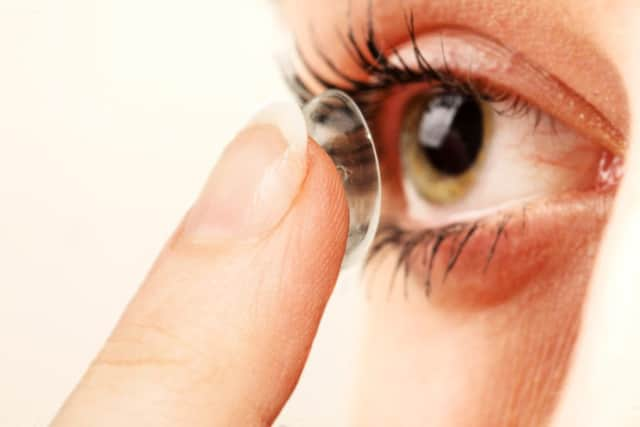Relief in sight for contact lens wearers


Researchers at Stanford University in the US are close to finding a solution to the problem of dry, sore and itchy eyes that affects millions of contact lens wearers around the world.
The scientists are hoping to develop a machine that can improve the design of contact lenses to reduce or even eliminate the problem of dry eyes
Advertisement
Hide AdAdvertisement
Hide AdMuch of the discomfort arises from the break up of the tear film, a wet coating on the surface of the eye, during a process called dewetting. The research team found that the lipid layer, an oily coating on the surface of the tear film, protects the eye’s surface in two important ways - through strength and liquid retention.
By mimicking the lipid layer in contact construction, millions of people could avoid ocular discomfort.
Dr Saad Bhamla and his colleagues at Stanford outlined two functions of the lipid layer. One is to provide mechanical strength to the tear film. Lipids in this layer have viscoelastic properties that allow them to stretch and support the watery layer beneath them.
The lipid layer also prevents the tear film from evaporating away. Eyes are roughly 35 degrees Celsius, which is usually warmer than the ambient air. Like any liquid on a hot surface, the eye is constantly heating its liquid coating and losing moisture to the air.
Advertisement
Hide AdAdvertisement
Hide AdProf Gerald Fuller said: “We recognised early on that the fluid mechanical responses of the lipid layer were just as important as the conventional view that its role was to control evaporative loss.
“And it’s been gratifying to realize that the combined role of these two forces is now accepted.”
He said the key to producing comfortable contact lenses involves designing ones that don’t destabilise the tear film.
Dr Bhamla added: “Some people are studying contact lenses by holding them up to a light, dipping them in water, and looking at them to see if the tear film breaks up.
“We felt we could definitely do better than that.”
Advertisement
Hide AdAdvertisement
Hide AdTo solve the problem, Dr Bhamla and Prof Fuller built a device that mimics the surface of the eye.
The machine, called the Interfacial Dewetting and Drainage Optical Platform or i-DDrOP, reproduces a tear film on the surface of a contact lens.
It allows both scientists and manufacturers to systematically handle the range of variables that affect the tear film - including temperature, a variety of substances, humidity and the way gravity acts along a curved surface.